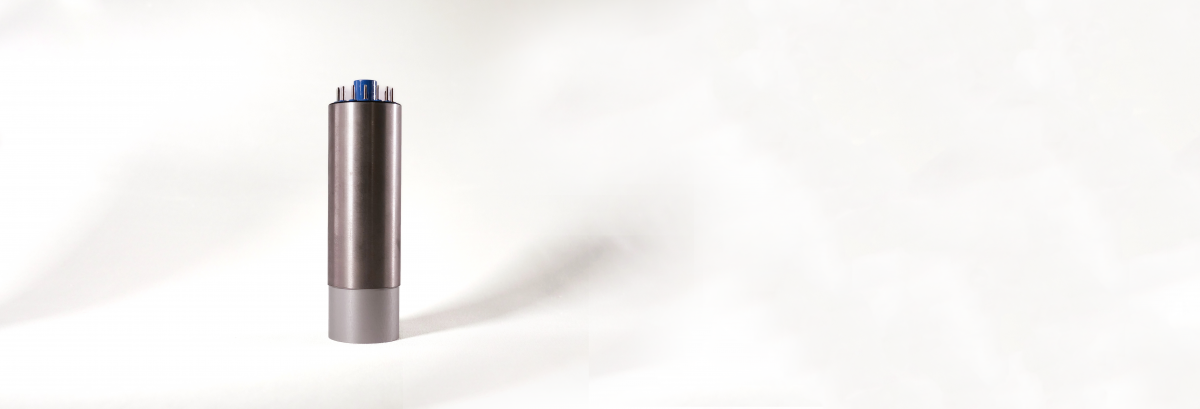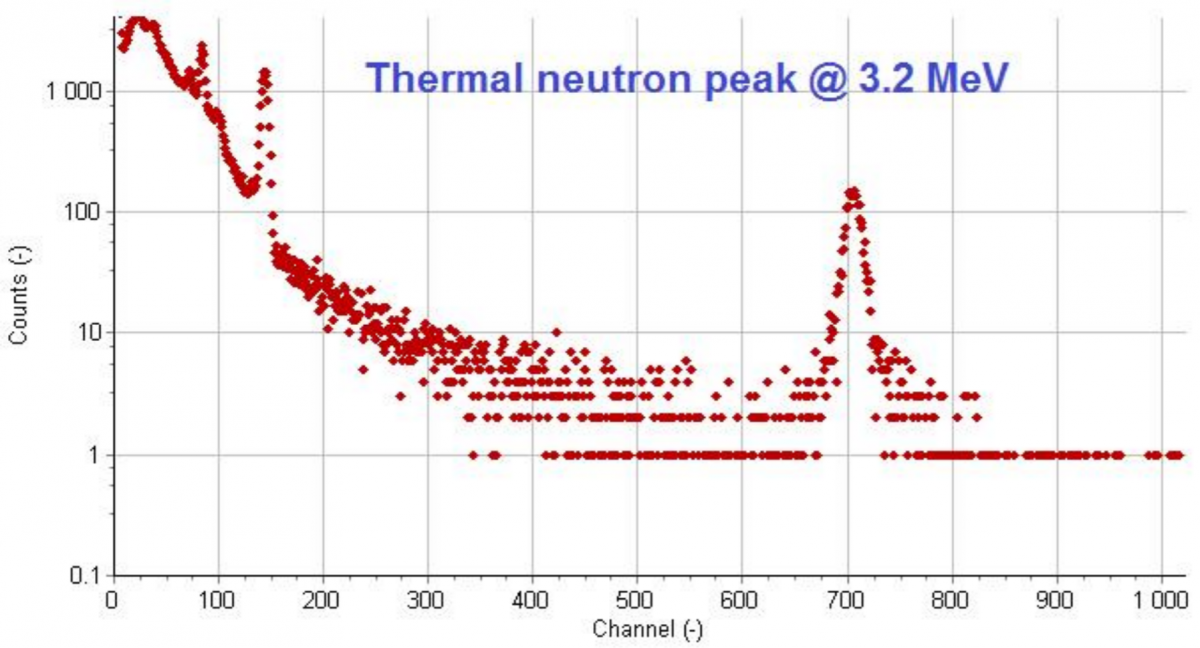May 13, 2024 - Neutron Detectors and Their Performance
Introduction
The detection of neutrons requires a special environment because neutrons do not typically cause ionization since they are not charged particles. The detection of neutrons must provide an environment of high neutron cross-section1 nuclides (target). Nuclides commonly used for neutron detectors are helium-3 (3He), lithium-6 (6Li), boron-10 (10B) and uranium-235 (235U). The detector material is surrounded by a moderator which reduces the kinetic energy of the neutron (slows down the neutron). Moderated neutrons are commonly called thermal neutrons, which provide a high probability of interaction with the target material.
The following neutron detectors are the most common types used today.
1The neutron cross-section expresses the likelihood of interaction between an incident neutron and a target nucleus.

The 3He Gas-Filled Proportional Detector
Since 3He has no electrical charge, neutron interactions with atomic electrons are impossible (as in X-ray, gamma, electron or beta detectors). Therefore, neutrons rely on an abundance of atomic nuclei of high neutron cross-section.
The n+3He reaction is shown below with conservation of energy as:
n + 3He → 3H + p + 764 keV
The energy 764 Kev is the sum of the proton (p) kinetic energy of 573 keV plus the triton (tritium ion, 3H) kinetic energy of 191 keV. This total energy (764 keV/charge) is collected as daughter products yielding an output pulse which is proportional to the 764 keV energy for the thermal neutron.
3He provides an efficient neutron detector when it reacts by absorbing thermal neutrons, producing a proton (p or 1H) and a 3H ion (tritium). Its sensitivity to gamma rays is negligible, providing a very useful and sensitive neutron detector. Unfortunately, the supply of 3He has limited production since it is a byproduct from the decay of tritium (which has a 12.3-year half-life). Tritium is produced either as part of the weapons program as a booster for nuclear weapons or as a byproduct of reactor operation. Therefore, the price of these detectors is somewhat high due to limited availability.
Lithium-6 (6Li) Neutron Detector
These neutron detectors operate by combining 6Li and cerium ions into a scintillating glass fiber composition. 6Li has a high cross section for thermal neutron absorption yielding a reaction that will produce a tritium ion, an alpha particle and kinetic energy. The ionization produced is transferred to the cerium ions which result in an emission of photons with wavelengths of 390 to 600 nm. This event will result in a flash of light with several thousand photons for each neutron absorbed. This is called a Li(nα) reaction yielding pulses much larger than the 3He reaction. The glass fiber acts as a wave guide for the scintillation light which is coupled to a PMT. Pulse shape discrimination (PSD) is then used to further enhance the separation of gamma and neutron events (typically 1:107).
The CLYC (Cs2LiYCl6:Ce) and CLLBC (Cs2LiLa[Br,Cl)6:Ce) Neutron Detector
These two detectors have similar reactions with Li as explained above. In addition, they are unique in that the same detector offers both gamma spectroscopy and neutron detection. These detectors yield good gamma resolution and neutron separation in the same device at the same time. These dual-mode gamma/neutron detectors are readily available in 2x2 inch detectors and larger. The separation of gamma-neutrons is accomplished by displaying neutron events above 3 MeV in the gamma spectrum as shown below (giving two distinct distributions).

Boron Trifluoride and Boron Nitride Neutron Detectors
This detector uses ionization to detect neutrons much like the 3He detector but instead of 3He, it uses boron trifluoride (BF3) gas as the detecting medium. The boron-10 isotope present in the gas is a good neutron absorber yielding a charged particle that can be detected and measured as a proportional detector. This detector is also highly sensitive (as the neutron detectors presented above). The boron nitride (BN) detector can be used for detecting fast neutrons (no moderator) with efficiencies as high as 59%. These detectors can be produced in large sheets for use in power plants and other nuclear facilities.
The Domino uses semiconductor technology to form tiles which are backfilled with 6LiF or 10B and are called Microstructured Semiconductor Neutron Detectors (MSND). The advantage of this technology is the reduced form factor with the flexibility to stack or configure these tiles into different shapes. This may come with some loss of efficiency (generally giving a total 20 – 30%) but yields a high gamma rejection ratio (typically a rejection ratio of 1:10 7 gamma to neutron).
The Rem Ball
This device is used to measure the neutron dose equivalent (H). It is in the form of a large ball including a moderator. This detector is generally large and stationary (typically ~ 20 cm in diameter). Measurements of the neutron dose or dose rate is complex and cannot be accomplished with any of the previously discussed neutron detectors.
Summary
Each of these detectors has their own advantages and disadvantages, therefore, the choice depends on the specific application and the form factor needed. Please consult with BNC to determine the correct detector and configuration for your specific need.
